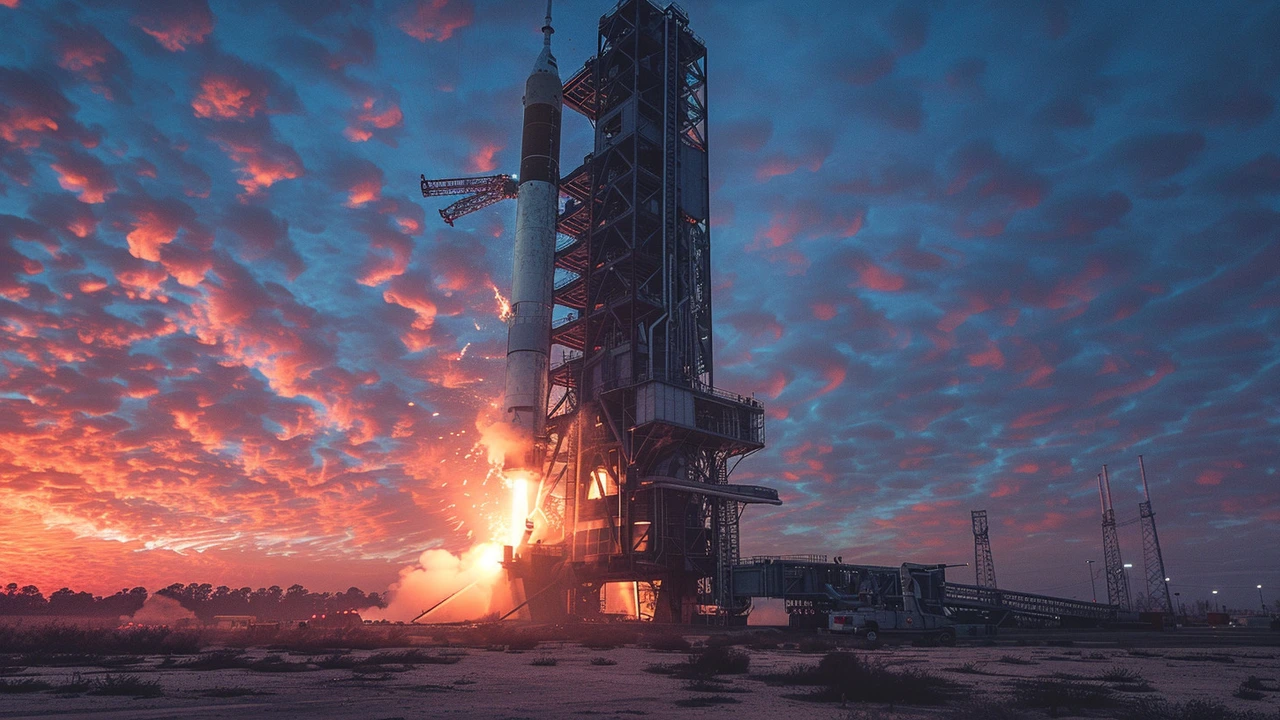The Future Path of NASA's Marshall Space Flight Center
The iconic Marshall Space Flight Center, an epicenter of aerospace innovation, is poised for a transformative change. As part of a strategic infrastructure overhaul, the center is scheduled to dismantle 19 of its older facilities. This project is not merely about demolition; it's a well-thought-out initiative aimed at streamlining operations and paving the way for future advancements.
Among these soon-to-be-demolished structures is the Dynamic Test Stand, a historical behemoth that was erected in 1964. This structure played a significant role in the testing of Saturn V rockets, crucial to America's lunar exploration efforts. This facility, like the others slated for demolition, represents NASA's remarkable past but must make way for new developments that will support upcoming missions in space exploration.
Detailed Insights into the Structures Facing Demolition
The Propulsion and Structural Test Facility, known affectionately as the 'T-tower,' was another integral part of NASA's early operations. Constructed in 1957, it has been instrumental in testing essential components for various space missions, including the Saturn launch vehicles and the shuttle solid rocket boosters. Yet, the evolving demands of space exploration have rendered this facility obsolete.
Similarly, the Neutral Buoyancy Simulator has been an essential tool for astronaut training. Built in the late 1960s, its 1.3-million-gallon tank simulated near-weightlessness, allowing astronauts to rehearse intricate spacewalks and hardware installations, critical for the maintenance of the Hubble Space Telescope. The decision to dismantle it underscores NASA’s shift toward more sophisticated training methods that can more accurately mirror the conditions of space.
Implications and Forward-Looking Statements
Joseph Pelfrey, the center director of Marshall, has expressed a complex mixture of respect for the past and optimism for the future. While acknowledging the sentimental value of these structures, he is keenly aware of the necessity for modernization to propel further innovations. 'As we stand on the shoulders of giants, we must build a foundation that will carry us to new heights,' he stated, emphasizing the balance between preserving heritage and embracing innovation.
Moreover, this project isn’t solely about making space by tearing down the old; it also involves laying the groundwork for new infrastructure. Plans are underway to construct two state-of-the-art buildings over the next ten years. These facilities are envisioned to foster a more interconnected and efficient workspace, enhancing both the productivity and well-being of NASA’s workforce.
Timeline and Additional Projects
Engineering teams are busy finalizing the demolition details, with activities expected to kick off by late 2024 and wrap up by the end of 2025. This timeline reflects not only the physical scale of the task ahead but also the meticulous planning involved in ensuring that the legacy of these historical structures is duly honored.
In addition to these demolition efforts, other NASA sites are also embracing eco-friendly initiatives. For instance, the team at NASA's Michoud Assembly Facility recently marked Earth Day by planting satsuma trees around their premises. Such activities highlight NASA’s commitment to sustainability, even as it continues to push the boundaries of human knowledge and capabilities in space.
Together, these efforts at Marshall and beyond signify a bold stride toward a future where the past is cherished, the present is sustainable, and the future is boundlessly optimistic. With these transformations, NASA continues to nurture a culture of innovation that will fuel the next era of space exploration, making sure they remain at the forefront of global space endeavors.
